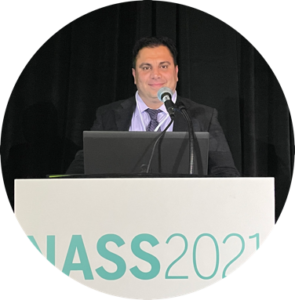Using 3D Image Based Inspection and Simulation Methods for Computational Modeling and Analysis of Patient-Specific Orthopedic Joints and Implants
Engineering in Medicine and Biology Society and co-sponsoring Young Professionals
Biomechanics research has a significant role on evaluation and optimization of surgical techniques for treatments of orthopedic and spine related disorders. Traditionally mechanical testing and Ex Vivo experiments have been used for assessment of surgical procedures. Also, computational modeling methods such as Finite Element analysis has been utilized for assessment of the effect of implant design or variation on the surgical setting on the outcomes of the procedures. However, with the advancement in manufacturing technology now we can design advanced structures which benefit from unique and sophisticated design features to match requirements of biological environment and patient’s anatomy. AM of metal parts is becoming more common as an alternative approach to transform traditional production manufacturing because it has many benefits, including the seemingly limitless degree of freedom for mechanical designs as well enabling the production of complex geometries and customized parts directly from the part design without dedicated tooling.
One of the common applications of 3D printing of metals in orthopedics is patient specific implants (PSI) where the implant intended to replace part of the bone/joint is designed to match patient’s native anatomy. Computational modeling can be used as a reliable tool to optimize the design of such PSI constructs prior to the surgery. This presentation will focus on description of a novel method and workflow for simulation of the biomechanics of a patient specific orthopedic implant using image-based modeling technique.
Dr. Kiapour – Background
Dr. Kiapour has 15+ years of experience in the field of Biomechanics, orthopedic research and computational modeling of medical devices and systems. Here is currently the director of biomechanics research at the department of Neurosurgery at Massachusetts General Hospital, Harvard Medical School in Boston and also is consultant for various spine and orthopedic device manufacturing companies. Dr. Kiapour is a member of ASME’s V&V40 committee on Computational modeling of medical devices. He also serves as an active member of ASTM Committee F42 on Additive Manufacturing Technologies. Dr. Kiapour’s current research involves utilizing novel image-based methods for computational modeling of as-built additive manufactured metallic orthopedic medical devices and implants.

